How To Write A Resume – The Best Guide
This is the ultimate guide to learn how to write a resume! Learn how to perfect your resume to create an ATS-friendly resume with keywords.
This post may contain affiliate links, which means I’ll receive a commission if you purchase through my link, at no extra cost to you. Please read full disclosure here.
As an Amazon Affiliate I earn from qualifying purchases.

Questions this post will help you answer!
- How To Build A Resume
- How To Format A Resume
- The Goal Of A Resume — What Your Focus Should Be
- Are You Getting Screened Out Unknowingly?
- What If I Don’t Have Much Experience?
How To Write A Resume
Here is a step-by-step list of how to build a resume:
- Add your contact information to the top: Include your name, phone number, email address, and LinkedIn address.
- List your work experience: List your work experience in reverse chronological order, starting with your most recent job. Include the job title, company name, dates of employment, and a brief description of your responsibilities and accomplishments.
- Include your education: List your educational background, including the name of the institution, the degree or certification earned, and the dates attended.
- Add relevant skills: Include any relevant skills or certifications that are relevant to the job you’re applying for.
- Use action verbs: Use action verbs to describe your experience, such as “managed,” “created,” or “developed.”Here are some action verbs to use in your resume:
- Tailor your resume: Tailor your resume to the specific job you’re applying for by including keywords and phrases from the job description.
- Proofread: Proofread your resume for errors or inconsistencies.
- Keep it concise: Keep your resume to one page if possible, and only include relevant information.
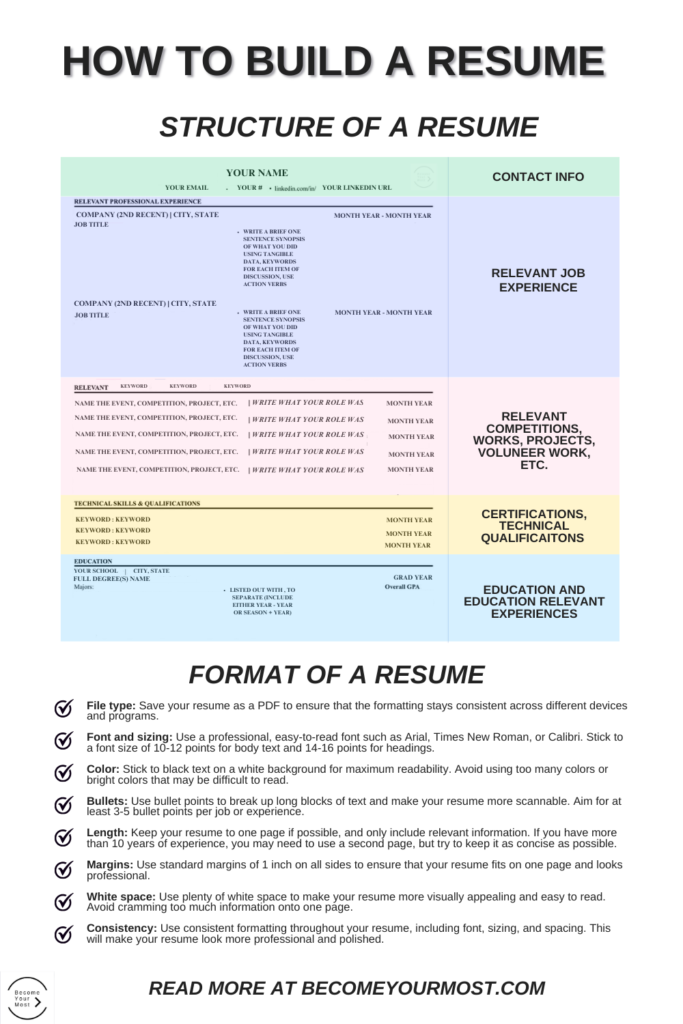
Here are some action verbs to use in your resume:
- managed
- created
- developed
- implemented
- coordinated
- organized
- designed
- trained
- evaluated
- solved
- led
- achieved
- initiated
- advised
- directed
- oversaw
- streamlined
- optimized
- innovated
- transformed
- spearheaded
- delivered
- exceeded
- resolved
- facilitated
- administered
- maintained
- monitored
- planned
- budgeted
- forecasted
- marketed
- persuaded
- advocated
Remember, the primary goal of a resume is to showcase your qualifications and experience in a way that convinces potential employers that you are the best candidate for the job.
By following these best practices and tailoring your resume to the specific job you’re applying for, you can increase your chances of getting past the initial screening process and landing your dream job.
Use my resume above to create your own! — Fill in the spaces with your relevant experience, qualifications, and keywords for the job role you are applying to!
How To Write A Resume In Terms Of Formatting
Here are some best practices for formatting a resume:
- File type: Save your resume as a PDF to ensure that the formatting stays consistent across different devices and programs.
- Font and sizing: Use a professional, easy-to-read font such as Arial, Times New Roman, or Calibri. Stick to a font size of 10-12 points for body text and 14-16 points for headings.
- Color: Stick to black text on a white background for maximum readability. Avoid using too many colors or bright colors that may be difficult to read.
- Bullets: Use bullet points to break up long blocks of text and make your resume more scannable. Aim for at least 3-5 bullet points per job or experience.
- Length: Keep your resume to one page if possible, and only include relevant information. If you have more than 10 years of experience, you may need to use a second page but try to keep it as concise as possible.
- Margins: Use standard margins of 1 inch on all sides to ensure that your resume fits on one page and looks professional.
- White space: Use plenty of white space to make your resume more visually appealing and easy to read. Avoid cramming too much information onto one page.
- Consistency: Use consistent formatting throughout your resume, including font, sizing, and spacing. This will make your resume look more professional and polished.
How To Write A Good Resume — What Your Focus Should Be
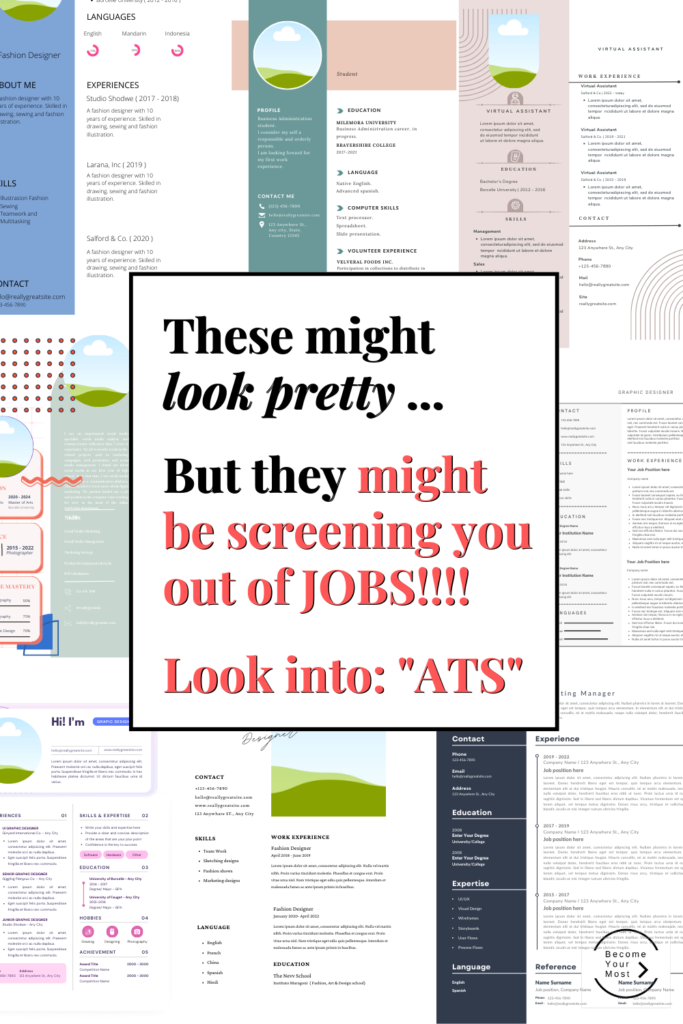
SIMPLE VS. AESTHETICALLY-PLEASING RESUMES
When learning how to write a resume you need to think about the design of the resume.
While it may be tempting to create a visually appealing resume with fancy fonts, graphics, and colors, it’s important to remember that the primary goal of a resume is to showcase your qualifications and experience.
While it can be tempting, I promise …. your talents, personality, knowledge, and achievements will be what help you get the job, not how aesthetic your resume is.
Ultimately, your resume should be easy to read and visually appealing, but not at the expense of clarity or professionalism.
Having a simple resume that is ATS-friendly is often a better choice than having an aesthetic resume that may not be compatible with ATS software.
ATS software is designed to scan resumes for specific keywords and phrases, and resumes that are difficult for the software to read may be rejected.
Read more below on reasons you might not be compatible and therefore get screened out!
THE GOAL WHEN LEARNING HOW TO WRITE A RESUME – (How To Write An Objective For A Resume)
The goal of your resume is to showcase your qualifications and experience in a way that convinces potential employers that you are the best candidate for the job — not a piece of branding.
By following these best practices and tailoring your resume to the specific job you’re applying for, you can increase your chances of getting past the initial screening process and landing your dream job.
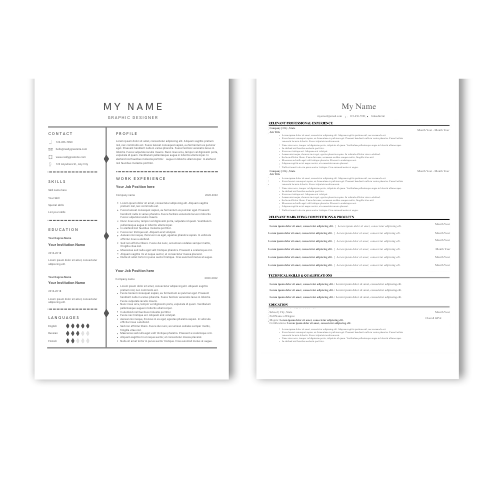
WHAT IS ATS?
IT IS ESSENTIAL TO LEARN ABOUT ATS WHEN LEARNING HOW TO WRITE A RESUME!
ATS stands for Applicant Tracking Software.
It’s a program that helps organizations manage their recruitment process more easily.
ATS automates tasks like collecting and sorting resumes, scheduling interviews, and sending automated emails to applicants.
ATS software helps employers keep track of their candidates throughout the recruitment process. This includes details like the number of job applications, shortlisted candidates, and candidates who got the job.
ATS makes the recruitment process faster and cheaper for employers, and it helps to eliminate bias in hiring by evaluating all candidates based on the same criteria.
Overall, ATS software is a tool for organizations that want to streamline their recruitment process and hire candidates for their business.
WHY DOES MY RESUME NEED TO BE ATS COMPATIBLE?
Your resume must be ATS compatible because:
- Many organizations use ATS software to manage their recruitment process. If your resume is not ATS compatible, it may not even be seen by a human recruiter.
- ATS software is designed to scan resumes for specific keywords and phrases. If your resume does not contain the right keywords, it may be rejected by the system.
- Even if your resume is seen by a human recruiter, an ATS-compatible resume is more likely to get past the initial screening process and be considered for the next stage of the recruitment process.
- An ATS-compatible resume is more likely to be ranked higher in search results, increasing your chances of being selected for an interview.
By making your resume ATS compatible, you are demonstrating your ability to adapt to new technology and processes, which is an essential skill in today’s job market.
WILL ATS AFFECT MY GETTING A JOB?
When learning how to write a resume you need to understand how it will get you a job.
According to a survey by Jobscan, 98.27% of Fortune 500 companies use ATS software for their recruitment process.
This means that if you apply to a large company, it’s likely that your resume will go through an ATS system.
It’s important to make sure that your resume is ATS-compatible to increase your chances of passing the initial screening process and being considered for the next stage of the recruitment process.
ATS software is designed to scan resumes for specific keywords and phrases, so it’s essential to optimize your resume accordingly.
By including relevant keywords and phrases in your resume, you can increase your chances of getting past the initial screening process and being selected for an interview.
HERE ARE SOME COMMON REASONS WHY RESUMES FAIL ATS SUBMISSIONS:
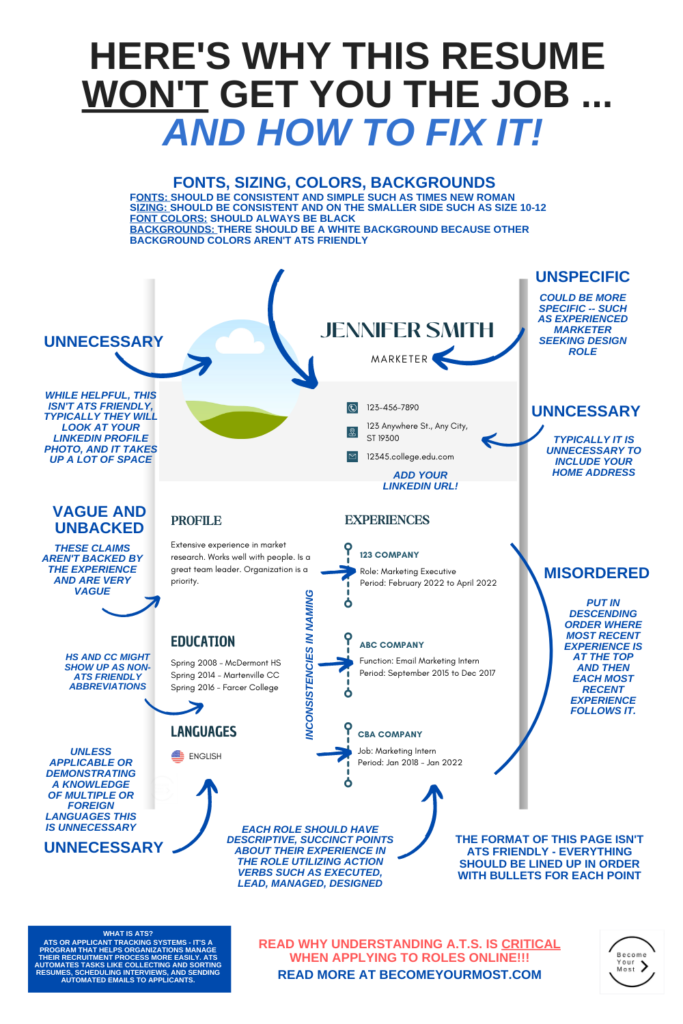
- Not using the right keywords and phrases that the ATS is programmed to look for
- Using fancy fonts, graphics, or colors that are difficult for the ATS to read — optimize your resume is by using a simple and clean format that is easy for both humans and ATS software to read. Avoid using fancy fonts, graphics, and colors that may make your resume difficult for the software to parse.
- Not formatting the resume properly, such as using tables or columns that can confuse the ATS — avoid them at all costs. Utilize the template I have created to help you format your resume.
- Using abbreviations or acronyms that the ATS may not recognize — only use very commonly used acronyms such as SEO.
- Not including enough relevant information for the ATS to categorize the resume correctly
- Having errors or inconsistencies — proofread your resume and eliminate any errors or inconsistencies that may confuse both humans and ATS software.
HOW TO MAKE A PROFESSIONAL, ATS-COMPATIBLE RESUME:
It is critical to learn HOW to make an A.T.S.-friendly resume when learning how to write a resume. Here’s how:
- Use relevant keywords and phrases from the job description – read more on steps to find keywords!
- Tailor your resume to the specific job you’re applying for
- Use a simple and clean format that is easy to read
- Use action verbs to describe your experience, such as “managed,” “created,” or “developed.”
- Avoid using fancy fonts, graphics, and colors that may confuse the ATS
- Use bullet points to highlight your qualifications and experience
- Include measurable achievements and results
- Quantify your experience with numbers and statistics
- Proofread your resume for errors and inconsistencies
- Keep your resume to one page
Where Should I Get Keywords From? — Job Descriptions!
STEPS TO FIND KEYWORDS:
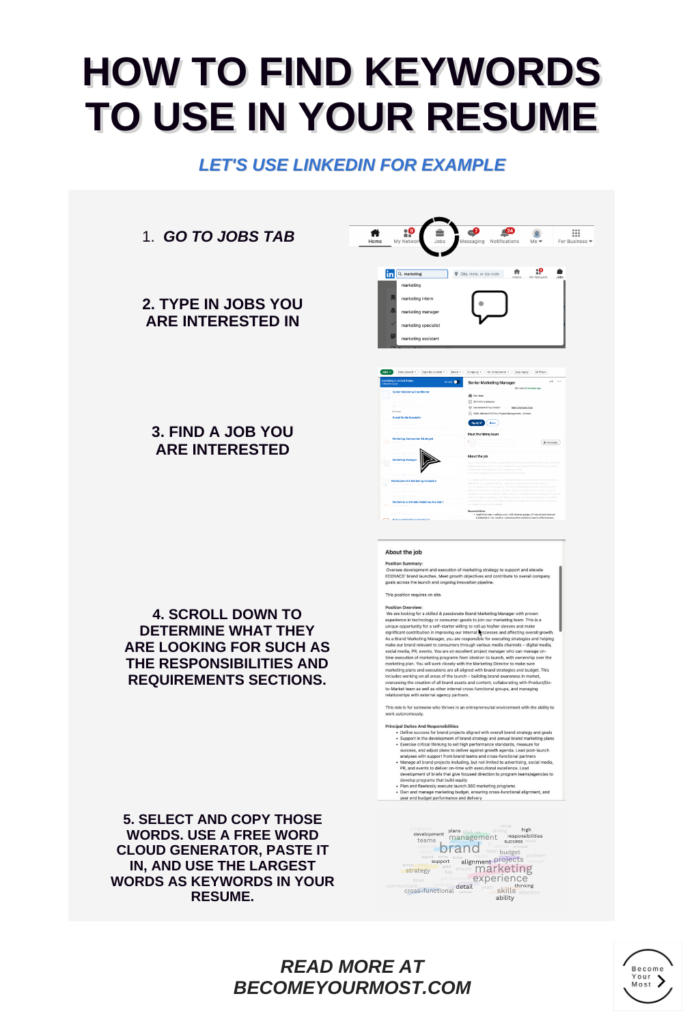
- Find a job description for a job you would like to apply for — if you are on LinkedIn go to the “jobs” tab.
- Scroll to the bottom of the job description (usually the top describes the company or general expectations such as being a team player).
- Find the Expectations section — essentially the “what we are looking for” section.
Here is an example:
- The ideal candidate should have 7-10 years of relevant professional experience.
- As a member of a small team, you will be expected to be a dynamic leader.
- Proven skills in branding, marketing campaigns, project execution, and strategy analysis are necessary.
- Strong research skills are a must, including the ability to identify competitors and industry trends to make recommendations on marketing strategies.
- Familiarity with digital marketing, including web analytics, SEO, and social media, is required.
- Experience with recruitment marketing initiatives is preferred.
- You will be expected to work with agencies and internal team members to utilize our applicant tracking systems, CRM, CMS, and social channels.
- Strong organizational skills and the ability to manage priorities are essential for this position.
Find a job description for a job you would like to apply for — if you are on LinkedIn go to the “jobs” tab.
- Scroll to the bottom of the job description (usually the top describes the company or general expectations such as being a team player).
- Find the Expectations section — essentially the “what we are looking for” section.
Here is an example:
- The ideal candidate should have 7-10 years of relevant professional experience.
- As a member of a small team, you will be expected to be a dynamic leader.
- Proven skills in branding, marketing campaigns, project execution, and strategy analysis are necessary.
- Strong research skills are a must, including the ability to identify competitors and industry trends to make recommendations on marketing strategies.
- Familiarity with digital marketing, including web analytics, SEO, and social media, is required.
- Experience with recruitment marketing initiatives is preferred.
- You will be expected to work with agencies and internal team members to utilize our applicant tracking systems, CRM, CMS, and social channels.
- Strong organizational skills and the ability to manage priorities are essential for this position.
3. You will need to find the keywords in this section. Here are two easy ways to do this:
4. Select words that you think are relevant to the role you are looking for.
In this case, this is a marketing role. You might already know that marketing roles typically look for people with experience in marketing campaigns, SEO, social media, etc.
5. An easier way to do this would be to create a word cloud!
Where To Get A Cloud Generator?
How do you do this? — there are tons of FREE word cloud generators online.
I used https://www.freewordcloudgenerator.com/generatewordcloud for this one!
- Use the biggest words in the image as keywords you use consistently throughout your resume. ATS systems love this.
- Create a different resume for each company you apply to. Use the keywords that are specific to that role.
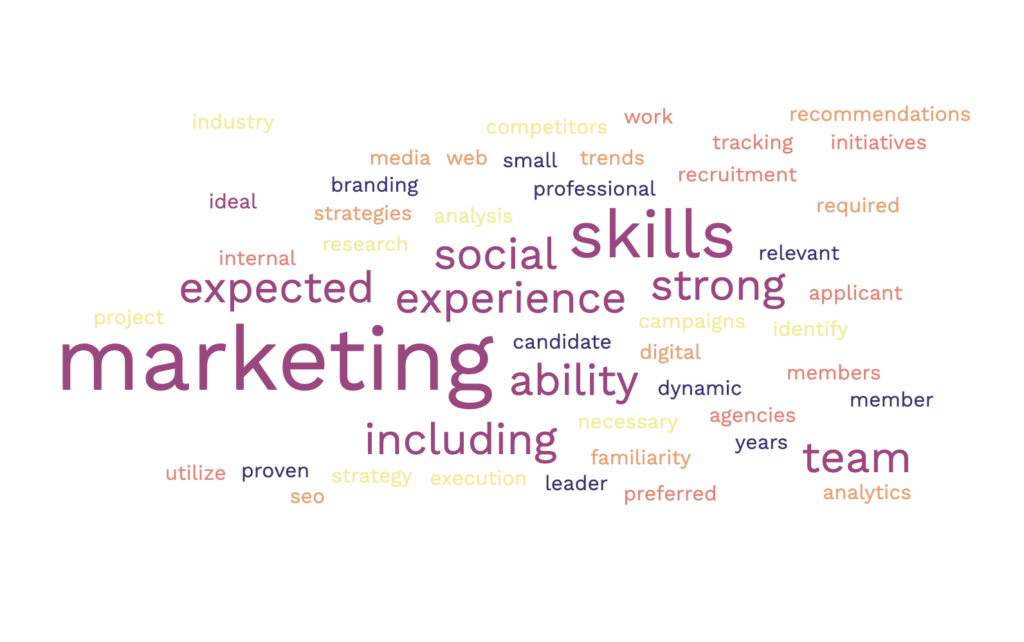
How To Write A Resume With No Experience

If you don’t have a lot of experience, it can be challenging to create a resume that stands out.
However, there are ways to pad your resume to make it more appealing to potential employers.
- One strategy is to focus on transferable skills.
- Even if you haven’t worked in a particular industry, you may have skills that are relevant to the job you’re applying for.
- For example, if you’re applying for a customer service position, you can highlight your communication and problem-solving skills.
- Even if you haven’t worked in a particular industry, you may have skills that are relevant to the job you’re applying for.
- Another strategy is to include volunteer work or extracurricular activities that demonstrate your leadership or teamwork abilities.
- Finally, consider taking additional courses or certifications to show your dedication to learning and professional development.
By highlighting these transferable skills and relevant experiences, you can make your resume more competitive and increase your chances of landing your desired job.
SUMMING UP – How To Write A Resume
I hope this helped you learn how to write a resume!
Creating a professional resume that is ATS-compatible can be challenging, but by following the best practices outlined in this post, you can increase your chances of getting past the initial screening process and landing your dream job.
Remember, the primary goal of a resume is to showcase your qualifications and experience, not your design skills.
By using relevant keywords and phrases, tailoring your resume to the specific job you’re applying for, and using a simple and clean format, you can create a resume that stands out to both humans and ATS software.
With these tips and tricks, you’ll be on your way to creating a winning resume that helps you land your dream job.






